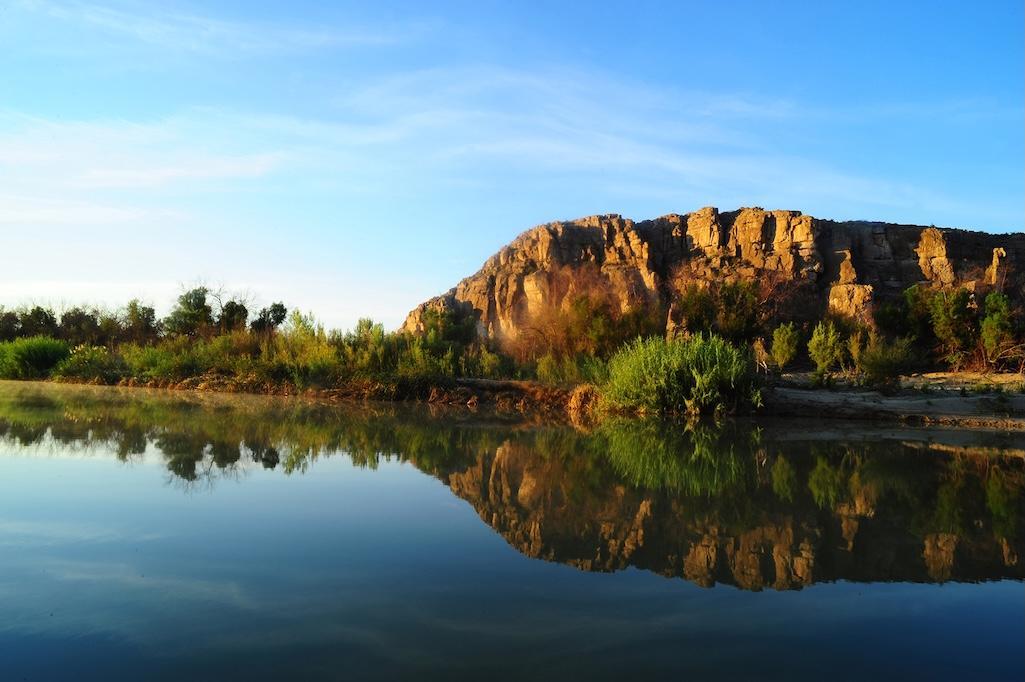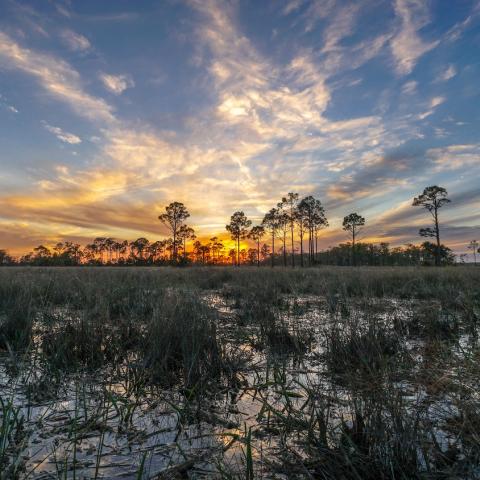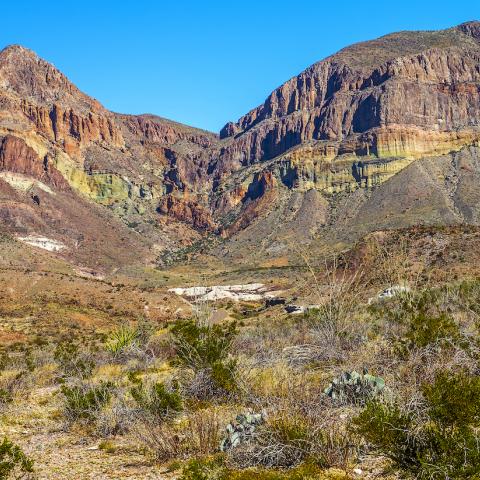
The military has been given a greater role on federal lands along the US-Mexico border/NPS file
President Trump has expanded the military's role on federal lands, including national parks, along the country's southern border, saying the border "is under attack from a variety of threats. The complexity of the current situation requires that our military take a more direct role in securing our southern border than in the recent past."
The order issued Friday night to the Agriculture, Homeland Security, and Interior departments referenced an executive order the president issued on Inauguration Day, January 20, in which he "assigned the Armed Forces of the United States the military missions of repelling the invasion and sealing the United States southern border from unlawful entry to maintain the sovereignty, territorial integrity, and security of the United States."
National park units along the border with Mexico include Big Bend National Park and Amistad National Recreation Area in Texas and Coronado National Memorial and Organ Pipe Cactus National Monument in Arizona. Tumacacori National Historical Park in Arizona was close to the border.
It was unclear how the heightened role of the military would impact park units along the border, though the National Park Service issued a brief statement, saying "[T]he Department of Defense and Texas National Guard have been assigned to support the U.S. Border Patrol Big Bend Sector, which operates in and around the park. Visitors are still welcome to explore the park, and we do not anticipate impacts to park operations or visitor services at this time."
The statement did not reference the other park units.
Trump's order specified that the three departments would "provide for the use and jurisdiction by the Department of Defense over such Federal lands, including the Roosevelt Reservation and excluding Federal Indian Reservations, that are reasonably necessary to enable military activities directed in this memorandum, including border-barrier construction and emplacement of detection and monitoring equipment; and ... to provide for transfer and acceptance of jurisdiction over such Federal lands in accordance with applicable law to enable military activities directed in this memorandum to occur on a military installation under the jurisdiction of the Department of Defense and for the designation of such Federal lands as National Defense Areas by the Secretary of Defense."
The "Roosevelt Reservation" is a 60-foot wide strip of land owned by the United States Federal Government along the United States side of the United States–Mexico Border that runs along California, Arizona, and Texas. President Theodore Roosevelt established it in 1907 to keep border lands in those states "free from obstruction as a protection against the smuggling of goods between the United States and Mexico."
Earlier this month the National Parks Traveler reported that U.S. Army troops, supported with eight-wheeled Stryker armored vehicles, had been deployed inside Big Bend National Park to back up Border Patrol agents working to secure the border. That was part of a move in which thousands of troops with air and ground support were sent into the Southwest to assist with border security in response to Trump's January 22 order authorizing the Departments of Homeland Security, Justice, and State "to take all necessary action to immediately repel, repatriate, and remove illegal aliens across the southern border of the United States."
There seems to be little precedent for the president's order, although back in 2003 a large swath of Organ Pipe Cactus along the southern Arizona border with Mexico was closed to the public after a park ranger, Kris Engle, was killed by members of a drug cartel.
The 28-year-old Engle was shot while chasing a Mexican gunman said to be trying to execute a $15,000 murder contract on a rival drug lord. The gunman and an accomplice were fleeing Mexican authorities when they drove into Organ Pipe Cactus just to the east of the border gateway of Lukeville. Ranger Engle and three Border Patrol agents went after the two, and in the ensuing chase the ranger was shot, the bullet entering his body just below his bulletproof vest.
In the wake of the ranger’s death, heavy lobbying convinced Congress to provide $18 million to build a vehicle barrier along the US-Mexico border. Officials say it has succeeded in ending illegal vehicular border crossings while allowing wildlife to pass through.
The travel of upwards of 1,000 illegal aliens a day led the Fraternal Order of Police to declare Organ Pipe our most dangerous park for a time early in this century. Indeed, at one point 95 percent of the park was closed to the traveling public because of the danger posed by the illegals.
In 2014 the entire park was reopened after the National Park Service and Border Patrol conceived a plan to allow continued surveillance by the Patrol while Park Service crews erased hundreds of miles of illegal roads and road traces that had been woven through Organ Pipe Cactus.




 Support Essential Coverage of Essential Places
Support Essential Coverage of Essential Places






